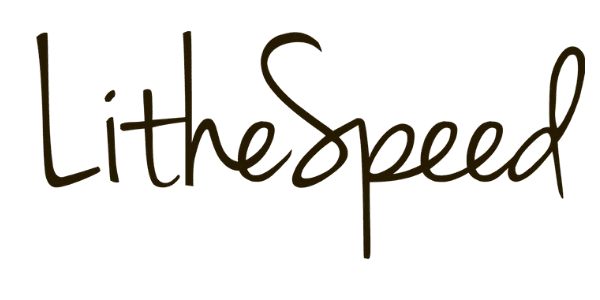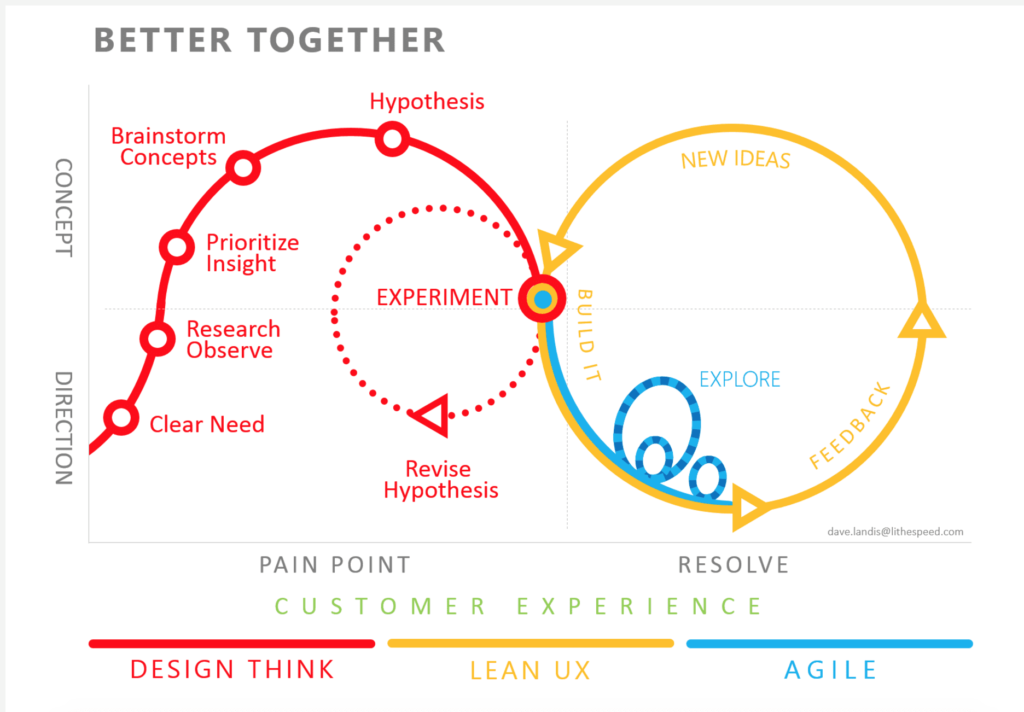I would like to highlight three key outcomes that applying Lean UX can bring to your agile teams. Let’s start with the base understanding of “Better Together”. These shared learnings come from my Lean UX workshop where I provide coaching for teams to practically and tactically adopt this new paradigm.
If you have been mastering the agile disciplines in your engineering practice, but have not connected your UX Designers and Researchers into the mix, you are missing some significant gains. You are leveraging the best of one practice while being dependent on incongruous processes that feed into your Agile projects, causing a less than robust agile practice. There is a clear and present need for the engineering process to be aligned end-to-end. By joining forces with all cross-functional teams, you can realize the ultimate goal of creating experiences that customers love.
Better Together
Bringing the best practices of Cross Functional teams together.
Engineering spans “Thinking It” to “Making It”, yet most companies set up systems that tailor their processes to the different aspects of engineering. When builders participate in parallel with thinkers, they achieve contextual understanding together, which frees up the need to lead by documentation. No hand offs are needed, as they know what to build; they were an integral part in conceiving of the project. This dramatically reduces the need for things like redlines, specs and demo reviews that ordinarily take great effort throughout the process, as real-time communication is so much richer. In every case that I have experienced, life is better together when all participate together in an agile methodology with Lean UX principles and Design thinking applied throughout.
Here is a diagram, curated from my experiences and others’ insights, that helped me and my teams “grok” the better together approach, applying Lean UX to agile.
DIAGRAM: How it all comes together.
DIAGRAM 02: Working together from End-To-End in an Agile manner
This blending of two seemingly different disciplines, mindsets, even objectives of the same product only becomes strengthened as they participate in interdependence throughout every stage of the process. In the give and take collaborative creation of the idea through to the thing itself, each participant learns from the other SME (subject matter expert). And each gains deeper understanding of the why’s involved. Firsthand experience by both types of talent in the engineering process in the thinking to the making removes the need for documentation to lead and dramatically reduces the “lost in translation” phenomena. I have found that when the team plays together in each other’s worlds – the divisive behaviors end, the comradery and buy-in increases and a joint passion for the projects and product enables the teams to deliver a much higher quality experience. Shifting to this interdependent “better together” model is the beginning for teams to transform beyond normal performing.
Part 2 will cover the Lean UX principle of “Getting out of the Deliverables Business” and hopefully add a little more clarity around what that actually looks like. (Read here)
Part 3 will focus on “Experience Outcomes“. I have become convinced that this is the most valuable principle of them all. (Read here)
So stay tuned!

